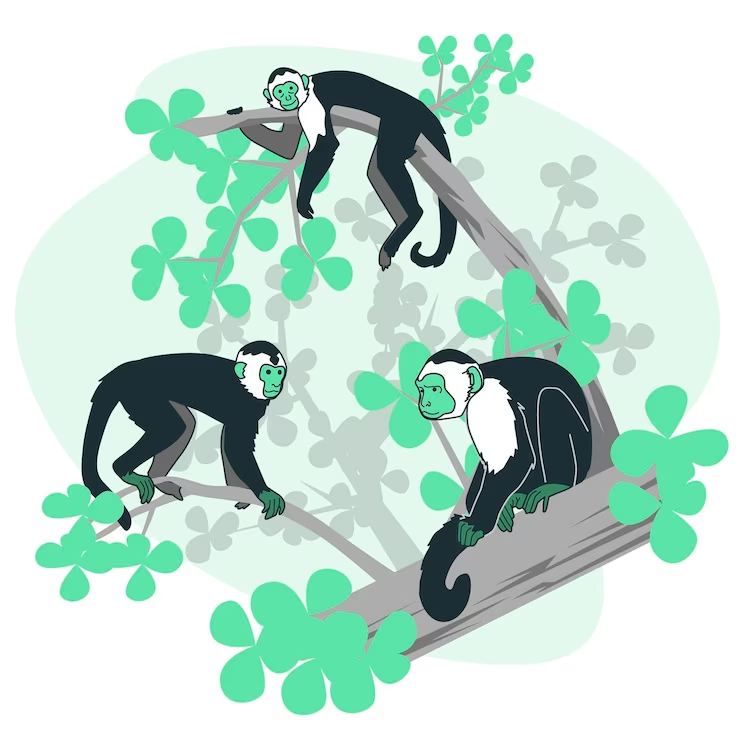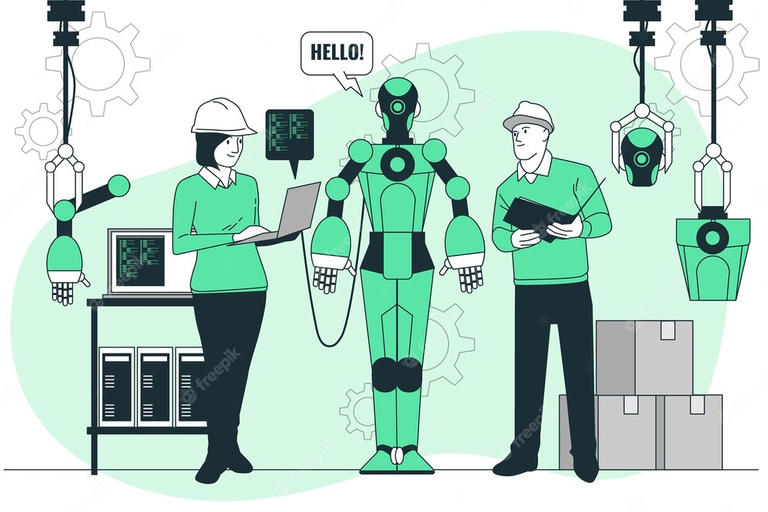Unveiling the Inner Workings of AI Language Models: Exploring Hidden Layers and Mysterious Phenomena

People illustrations by Storyset
What does it mean to have speech difficulties? Which part of the brain would be in question when those take place? What does it mean to have aphasia (inability to speak)? Why is the dominant hemisphere of the brain specifically affected?
Which part of the brain is responsible for allowing me to understand what I am writing? What would be the difference between difficulty speaking and difficulty understanding?
These questions were all answered by two brilliant scientists, Pierre Paul Broca and Carl Wernicke, in the mid-19th century.
It was clear as day after they had done all their research what the problem was. People who had speech problems, where their speech was broken but you could make some sense out of what they were saying, had a problem in the Brodmann areas 44 and 45 of the brain (Broca’s speech area). On the other hand, if a person could speak fluently but had a problem with understanding speech, the specific area in question would be area 22 (Wernicke’s area).
This was groundbreaking in the area of neuroscience and it helped explain what the problem was and how to deal with the problems when they arise. Now, surgeons can avoid these areas during epilepsy surgery, and there is a wider knowledge of how neuroplasticity works in the rehabilitation of speech conditions.
Since the discovery of these areas, however, no one is quite sure how they work. I mean, we know that there are neurons (biological electric wires) connected to themselves, and there have been speculations on their function, but they are all just speculations. Nobody really knows what is going on there.
To this day, no one is quite sure what is going on in these areas. We know for sure that they bring about speech, and Broca’s and Wernicke’s areas are connected to each other and to areas of the brain responsible for the motor aspects of speaking, but no one really understands what is going on there.
Non-Human Primates

People illustrations by Storyset
There have been several studies on the relevance of these brain areas in non-human primates: what is the use of the speech fluency area (Broca’s) and the speech comprehension area (Wernicke’s) in non-human primates? For the most part, we know they are not articulate; they do not speak and they swing from branch to branch.
However, there are social interactions that can be observed within the species. They communicate with each other and are able to show responses to their social interactions as a result of their vocalizations.
But there is a big difference between what humans are doing on a cerebral level and what these primates are doing.
For starters, the connections in the brain are distinct in humans but vary across species of non-human primates. Some are more complex than others, but none quite match what is seen in humans.
The closest animal with the capabilities to vocalize (the parrot) also has a very different anatomy from human beings.
We are still building this tower of Babel. Isn't it weird that when God wants to stop humans from seeing Him, He puts a language barrier between all of us?
The incidents in the Bible have not really stopped human beings from being able to build rockets and fly up into outer space, just to become more confused and come up with multiple theories about what is really going on in outer space... each person speaking a different language, building different theories as to why we are so alone.
The Hidden Layer in AI Language Models

People illustrations by Storyset
There is something weird happening in the world of AI. The people working on these projects are doing something pivotal to the way the world is shaped and will be shaped moving forward.
Many people do not know the extent to which AI is different from other technologies in the world today. It is so different that some have compared AI to these very important parts of the brain discovered in the mid-19th century, and they are not crazy to do so.
The deep neural network or hidden layers of AI are among those things that humans have made, but they really do not understand.
The operations that take place in these layers have been called a "black box" because no one is sure what is going on in there.
It is almost as if we have reached another impasse with God. Many people have their interpretations as to why we can't build higher in our understanding. But years will pass, and we will still move steps closer, but I think we will continue to find that God is bigger than what we previously thought.
ChatGPT Apologizes

People illustrations by Storyset
Sometimes, while engaging in a conversation with ChatGPT, it may apologize to you due to some of its errors. It does make errors, which are referred to as AI hallucinations.
I have also come across instances where AI has disregarded some of its rules and adopted a different writing style that it wouldn't normally use. This phenomenon is known as "hypnosis."
You have the ability to hypnotize the system.
Psychologist Jordan Peterson discusses this topic in his most recent podcast. You should check it out.
You can send me a message on WhatsApp at +2348134530293, and we can have a conversation, or you can speak with a licensed therapist.
Conclusion
In conclusion, the understanding of speech difficulties and the brain's involvement, as discovered by Pierre Paul Broca and Carl Wernicke, has significantly impacted neuroscience. While we know the brain areas associated with speech production and comprehension, the exact mechanisms remain elusive.
Similarly, the hidden layers of AI language models pose a mystery, akin to the enigmatic nature of the brain. As we explore these frontiers, we encounter limitations and gaps in understanding, reminding us of the vastness of knowledge. The parallels between human cognition, non-human primate communication, and AI language models spark fascination and reflection on the complexity of language and our pursuit of comprehension.
Despite the mysteries, our exploration continues, driven by curiosity and the recognition that there is always more to uncover.

Hey buddy, did you study physiotherapy? judging from our footnote
I'm an aspiring psychiatrist...I hope to start my residency as soon as possible.